Alaska Relies on Asphalt for Rapid Road Repair
BY AsphaltPro Staff
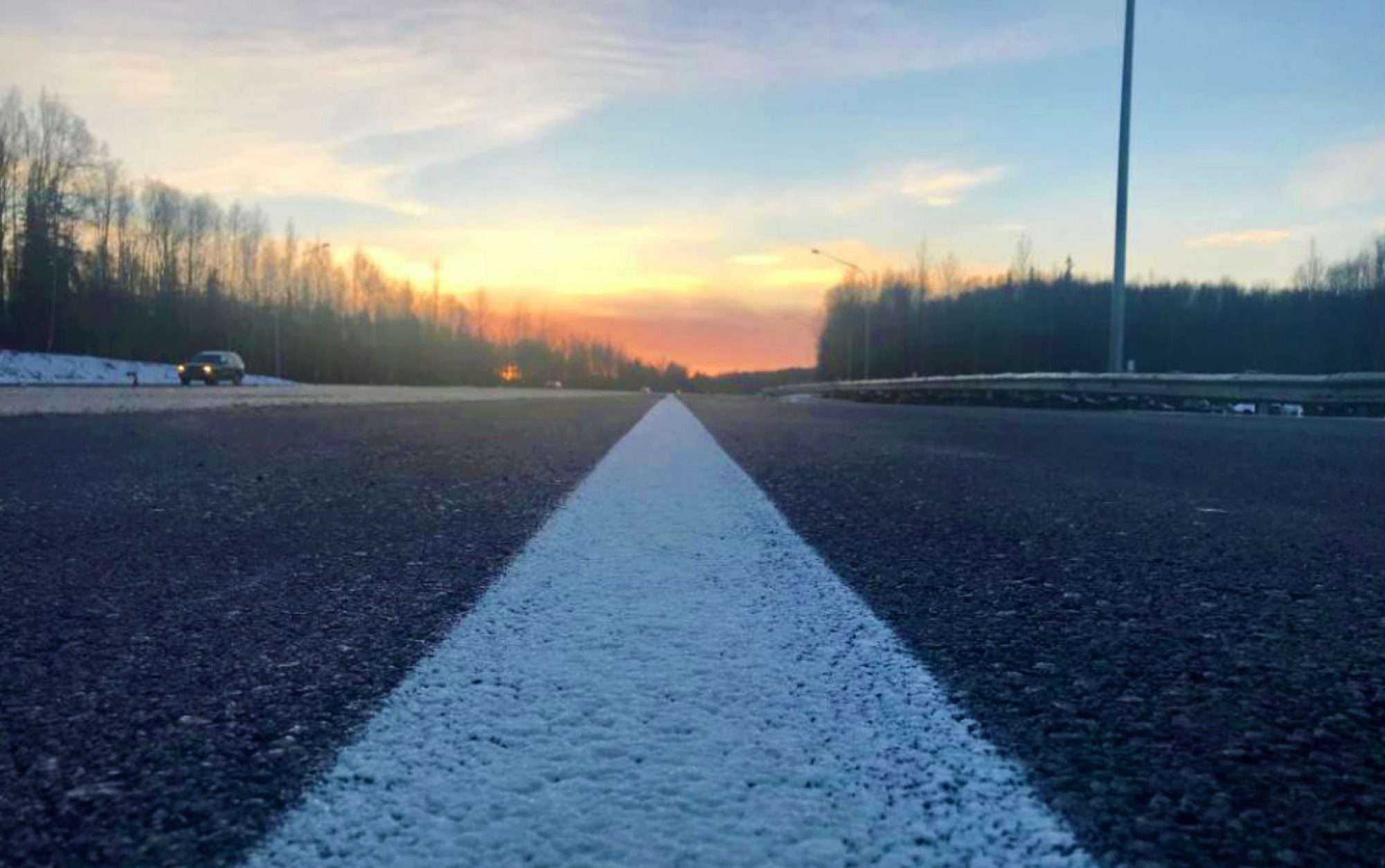
Alaska’s DOT and contractors came together to perform emergency road repairs following the November 2018 earthquake.
On November 30, 2018, Shannon McCarthy was at the maintenance and operation station for the city of Anchorage, Alaska. Media Liaison for the Alaska Department of Transportation, McCarthy was scheduled to meet a local reporter there at 8:30 a.m. for a story about salt brine.
As she walked toward the building at 8:29 a.m., she heard a loud sound.
“I knew that either a 747 jet was landing on me, or it was an earthquake,” McCarthy said. It was a 7.0-magnitude earthquake. According to the Earthquake Magnitude Scale, anything between a 7.0 and a 7.9 is considered a major earthquake.
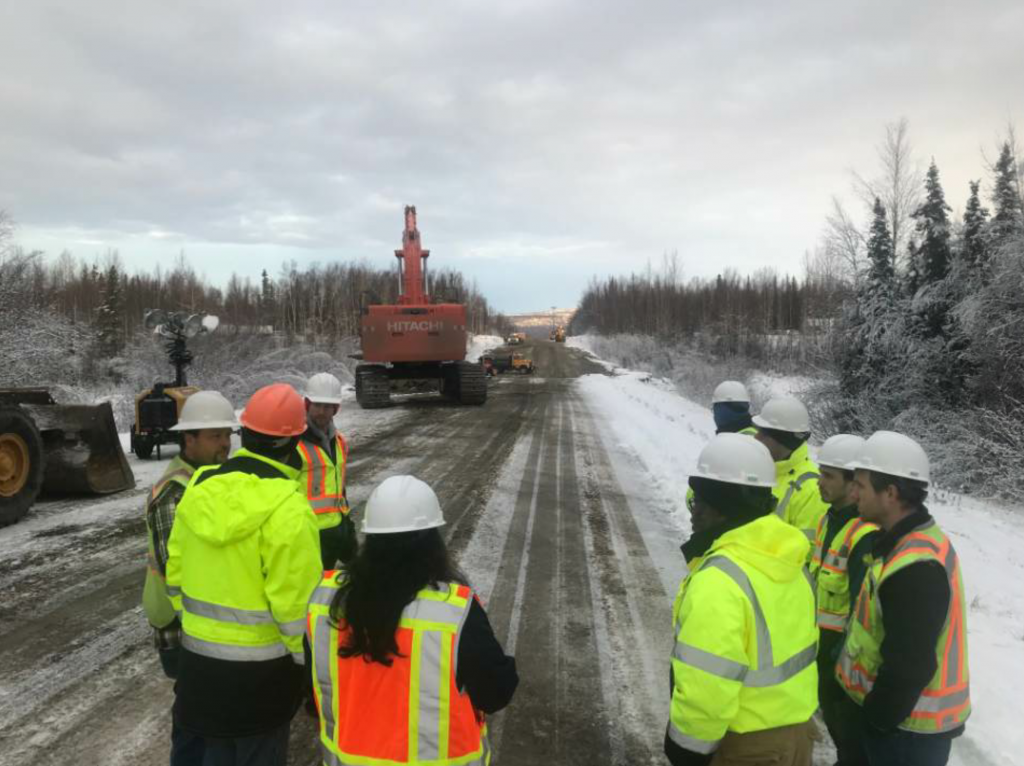
McCarthy said the contracting community began calling to ask how they could help within minutes of the earthquake.
After the quake, Anchorage’s own maintenance crews immediately jumped into their trucks to inspect roads and bridges. Reports of damage began to flood in. Some of the DOT’s own offices were damaged in the quake, so McCarthy worked from the maintenance station while the emergency response team convened in the DOT’s main conference room.
“Our phones and our Internet wasn’t very reliable, so the communications staff from Fairbanks, which was outside the emergency area, stepped in to help with the website, social media and press releases,” McCarthy said. “Then, we started getting the word out on social media, by participating in interviews on the news, and doing whatever we could.”
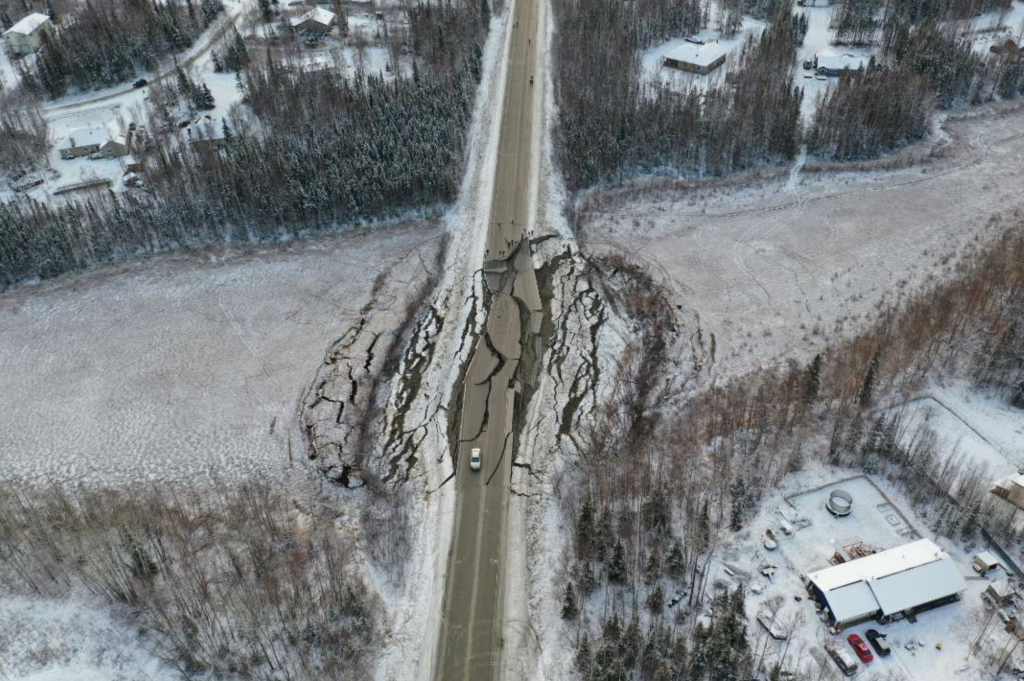
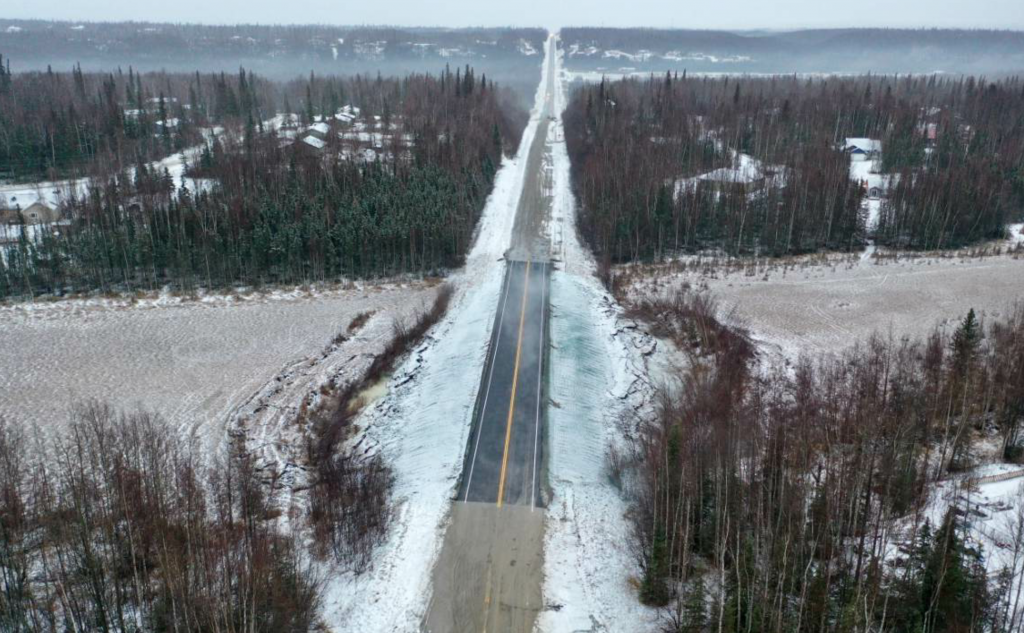
Vine Road was one of more than 170 different sites of damage. Here, you can see Vine Road before and after repairs were made.
McCarthy worked from the maintenance station until a little after 11 a.m., when she headed back to the main office via the route recommended by the maintenance crews. On her way, she saw crews already beginning to stage equipment at the repair sites.
“Seeing them out there working right away makes you very prideful of your community,” McCarthy said. “Everyone wanted to pitch in. It’s a great feeling.”
Scope of Damage
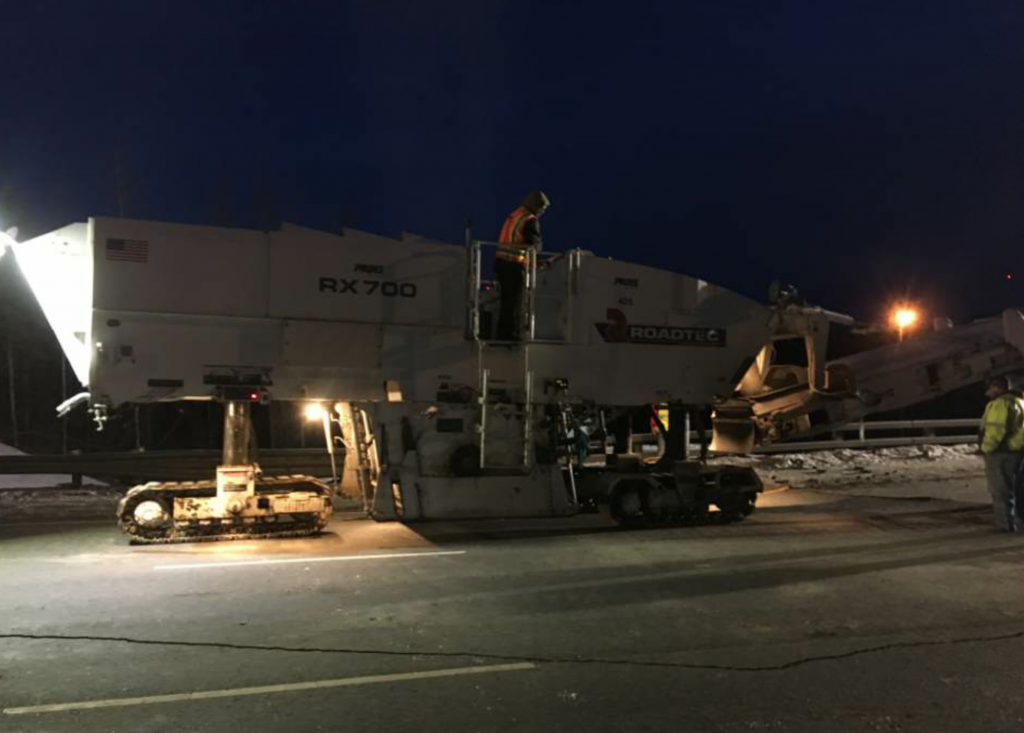
To perform the work, asphalt producers had to fire up their plants in the middle of winter and crews had to dust the snow off of their equipment and get it ready to work.
All told, there were more than 170 different sites of damage, including eight locations where traffic completely stopped and had to be re-routed. Three of those sites were major routes that had to be closed down due to the scope of the damage.
“Many other sites were minor enough that we could perform quick fixes on them and keep traffic moving,” McCarthy said.
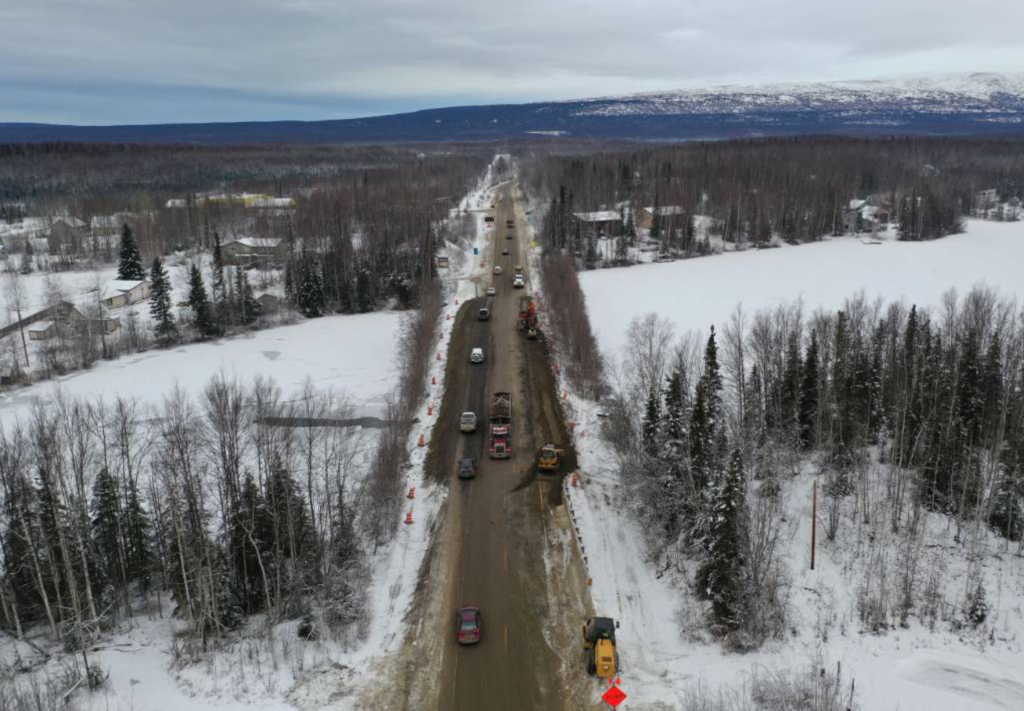
Of the more than 170 sites of damage, traffic completely stopped in eight locations. Three of the sites were major routes that had to be closed down due to the scope of the damage.
Seward Highway, between mile markers 104 and 114, was damaged by a major rock slide. “Enough material came down that we had to close the roads for the safety of the public,” McCarthy said. “Some of the rocks that fell even pierced the asphalt.”
The urban section of Seward Highway also had areas that had rippled so that motorists couldn’t safely drive at highway speeds.
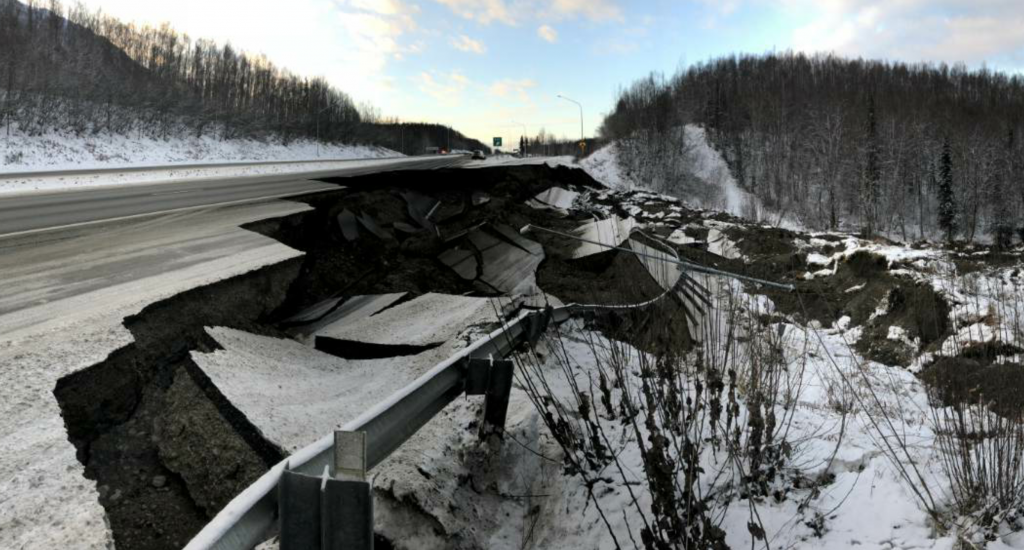
The Federal Highway Administration quickly released $5 million to the Alaska DOT to immediately begin to perform the repairs. In total the FHWA released $25 million.
Sinkholes had developed on Glenn Highway and an off-ramp of Minnesota Drive, used to access Anchorage International Airport. This particular section of damage became the source of some of the most widely circulated photos from the quake, including one of a red SUV stranded on an island of road surrounded by sinkholes.
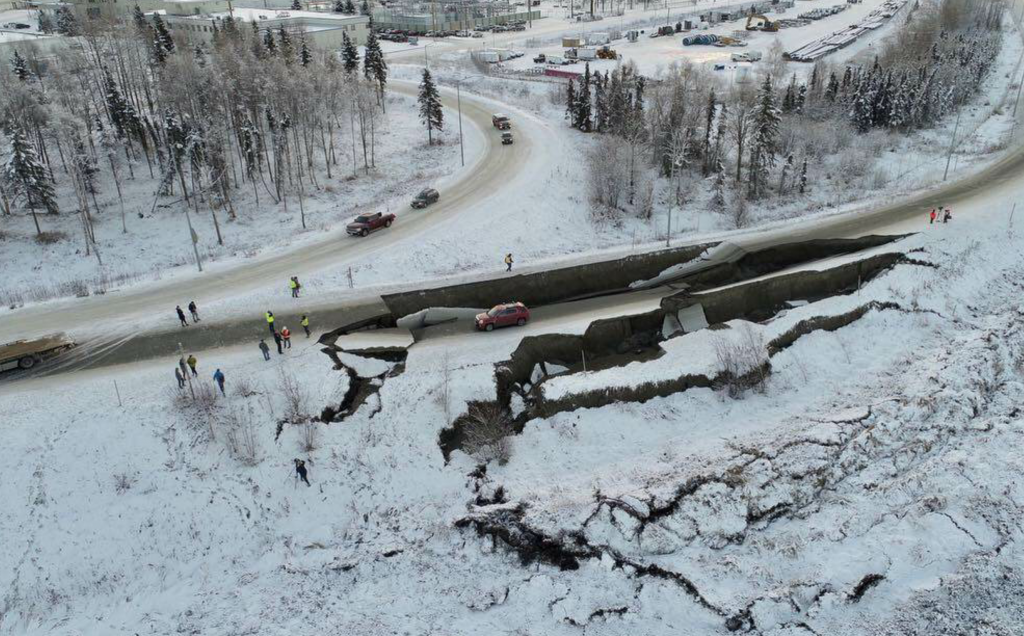
Sinkholes had developed on Glenn Highway and an off-ramp of Minnesota Drive, used to access Anchorage International Airport. Photos of a red SUV stranded on an island of road were widely circulated in the news at the time. Photo courtesy of Alaska Aerial Media. All photos courtesy of Alasak DOT & PF.
Due to a presidential emergency declaration, the Federal Highway Administration quickly released $5 million to the Alaska DOT to immediately begin to perform the repairs. In total the FHWA released $25 million.
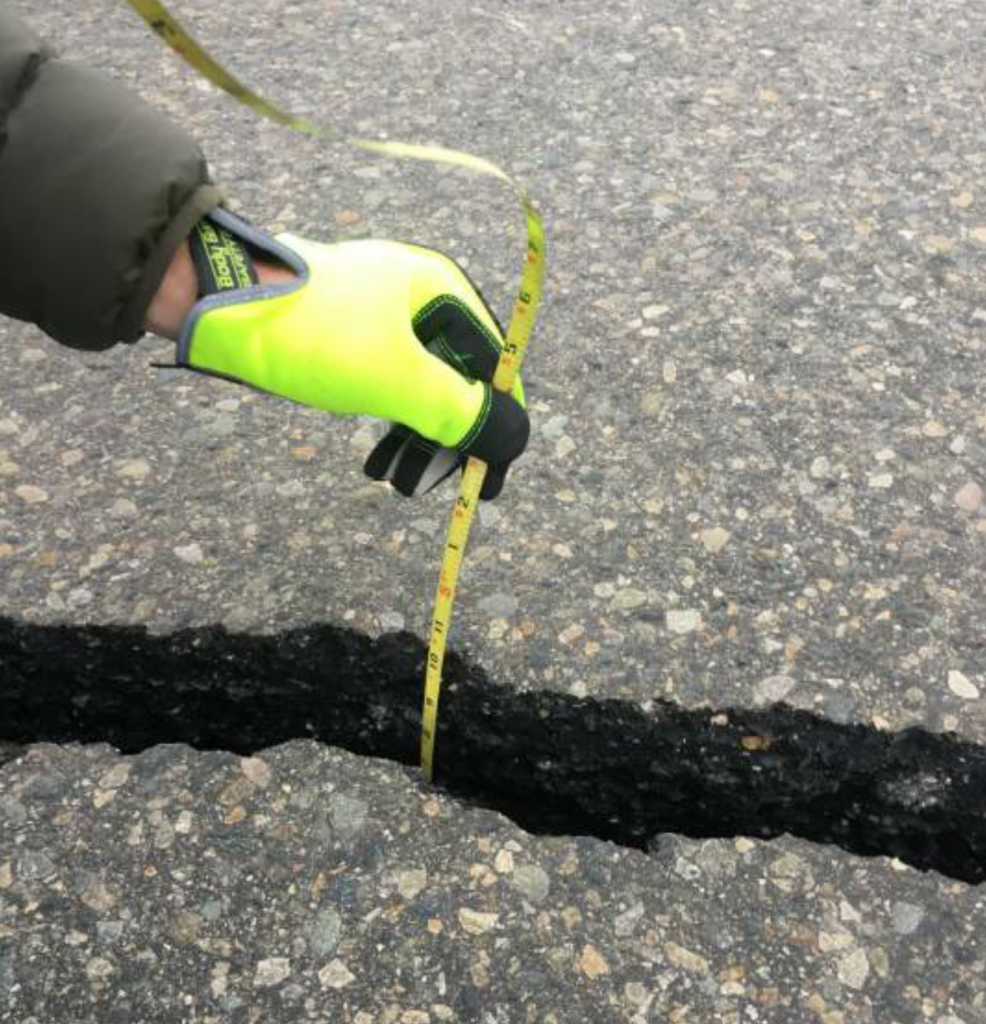
Even after the initial earthquake, aftershocks and ongoing settling presented new issues, including expanding sinkholes and growing cracks. Here is a crack along northbound Glenn Highway.
“Because everyone had experienced the same emergency, we were all very aware of what was going on,” McCarthy said. “Within minutes of the earthquake, the contracting community began calling in to ask how they could help.”
The DOT’s first question was to ask each company what their capability was. “That’s a very important question because lots of companies are in winter mode,” McCarthy said. “Staff are on vacation, equipment is covered in snow and ice. We needed to know how many people and what equipment they could get to the sites, and how quickly. ”
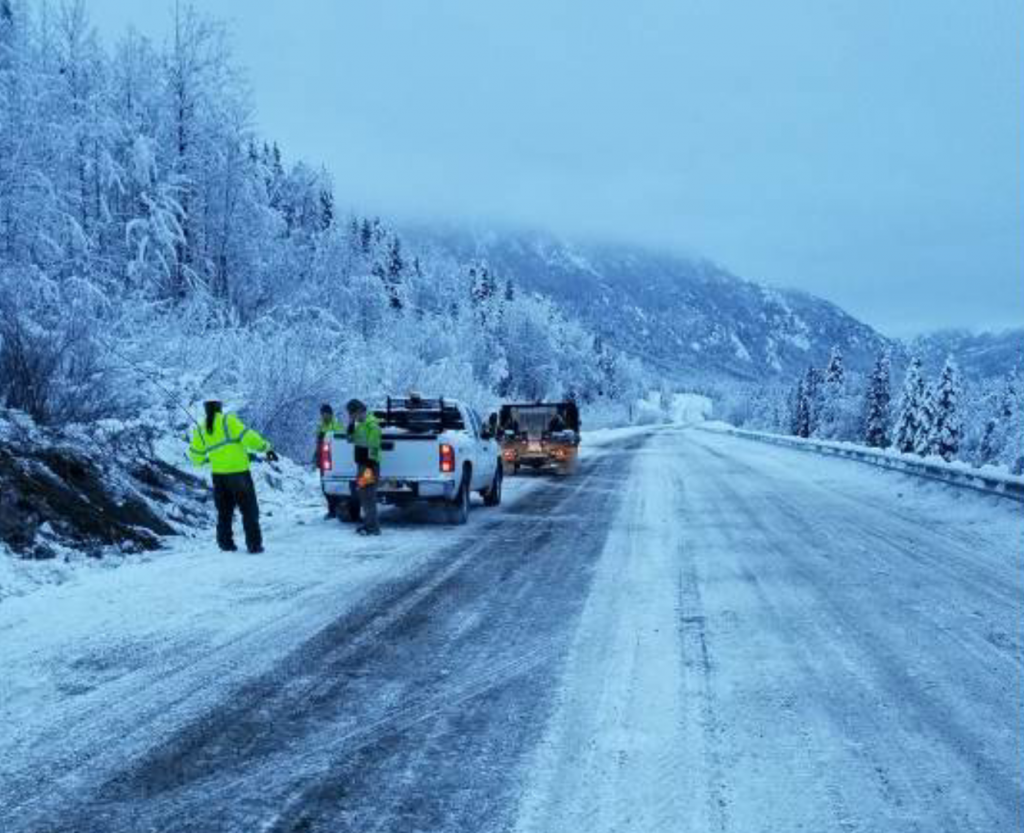
Performing the repairs at temperatures of around 25 degrees Fahrenheit presented some challenges.
With the emergency declaration approved, the DOT was able to tell crews immediately where to go and the DOT staff would meet them there to establish a plan.
“Our contract staff were writing contracts up as the crews were performing the work,” McCarthy said. “We would not have been able to get started so quickly if we didn’t have a good working relationship with the contractors. They were really supportive. It’s their community, too.”
One of those contractors was Knik Construction, Anchorage.
Contractors Come Through
Shortly after the earthquake, Knik Construction President Dan Hall called the DOT to offer help. The DOT promptly called him back and asked them to meet them at the Minnesota Drive Expressway. By 10:30 a.m., Knik’s crews were on the ground.
“People walked out of homes that were in total disarray and away from their families to help the department and their community so their neighbors could get their lives back in order,” Hall said. Hall himself headed to the jobsite with broken possessions scattered across the floor of his house.
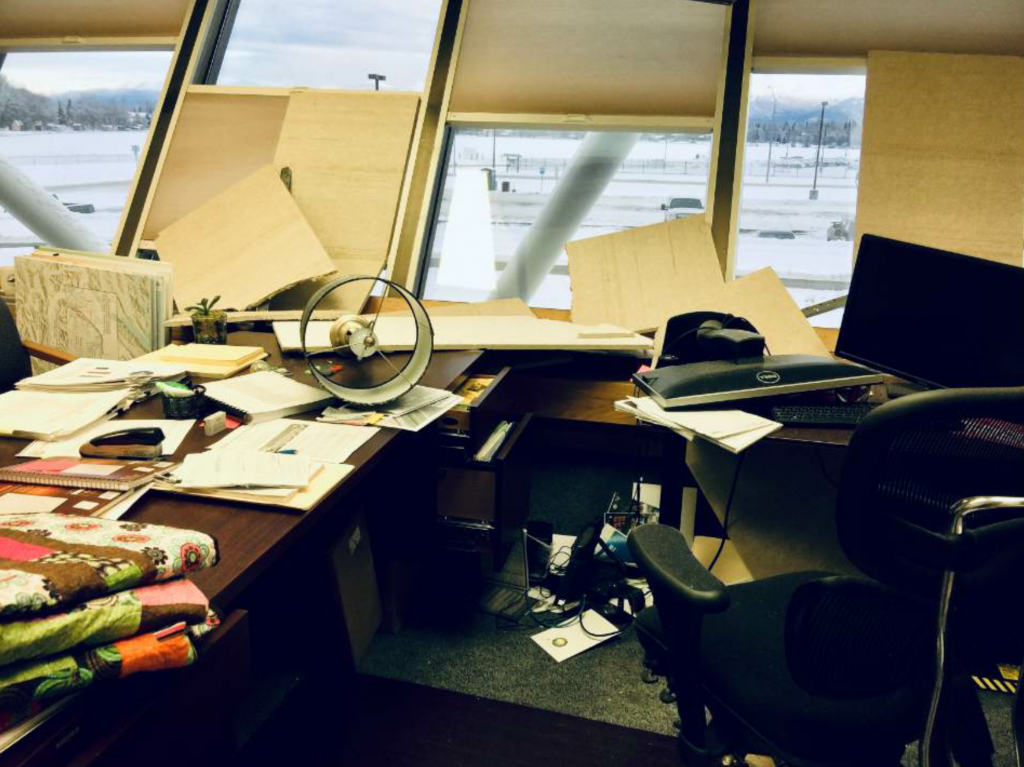
McCarthy’s office after the earthquake November 30, 2018.
Not only did the DOT rely on crews showing up to the job sites, but also on asphalt plants–all of which were shut down for the season–starting up quickly.
For example, QAP, Anchorage, immediately brushed the snow off their plant, checked for any damage, and turned it on. Within four days, they were supplying asphalt to Knik’s job on the Minnesota Drive Expressway just four minutes from their asphalt plant.
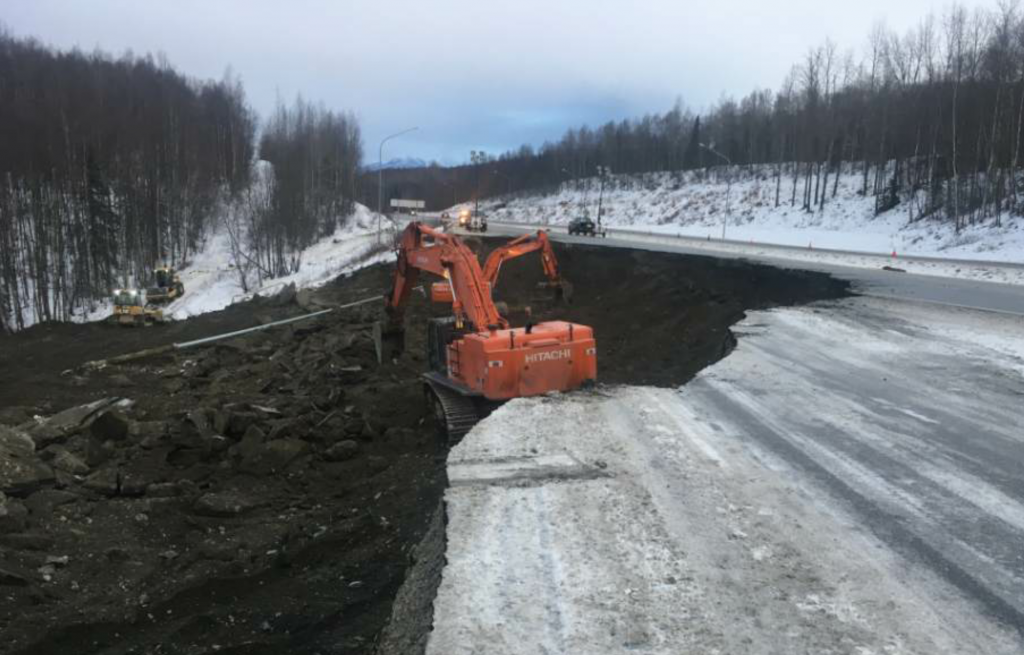
Before starting any work, they had to move some dirt and build up a ramp to tow the car stranded on an asphalt island surrounded by sinkholes. Then, Knik brought in an excavator to bust the pavement into chunks and pull the pavement apart for reuse. During that process, they found a broken culvert pipe that needed to be replaced. In the end, they replaced 80 feet of pipe, which was difficult with the frozen ground.
Since the damage spanned all lanes, Knik had to pioneer a temporary road for haul trucks to drive on. Next, they hauled in 5,000 tons of gravel to fill the holes and build the slope. To do this, their supplier had to get to the middle of their piles of aggregate to access material that wasn’t frozen. They also hydroseeded and mulched to stabilize the soil so it would not be lost with the spring thaw.
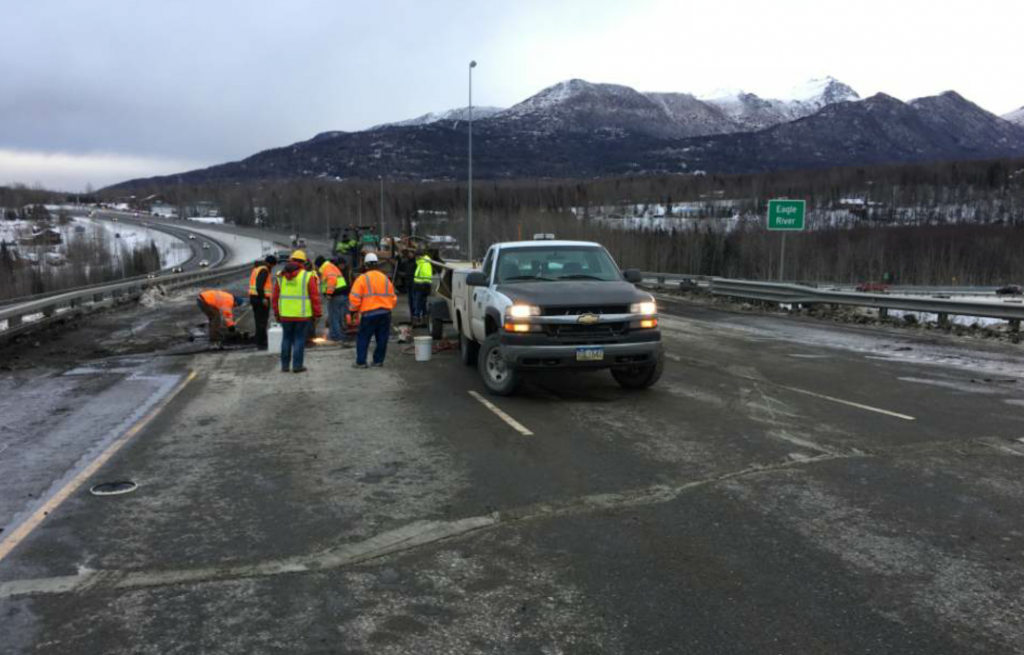
Within four days, they were ready to pave. Although it wasn’t a big job in terms of tonnage–the 500-foot job required only a couple hundred tons of hot-mix–it presented its own challenges.
“Making asphalt and laying it at 25 degrees was a challenge,” Hall said. It was difficult to retain heat in this weather, so it was lucky that the asphalt plant was nearby.
In addition to getting the haul trucks there as quickly as possible, they had to get it rolled behind the paver as quickly as possible.
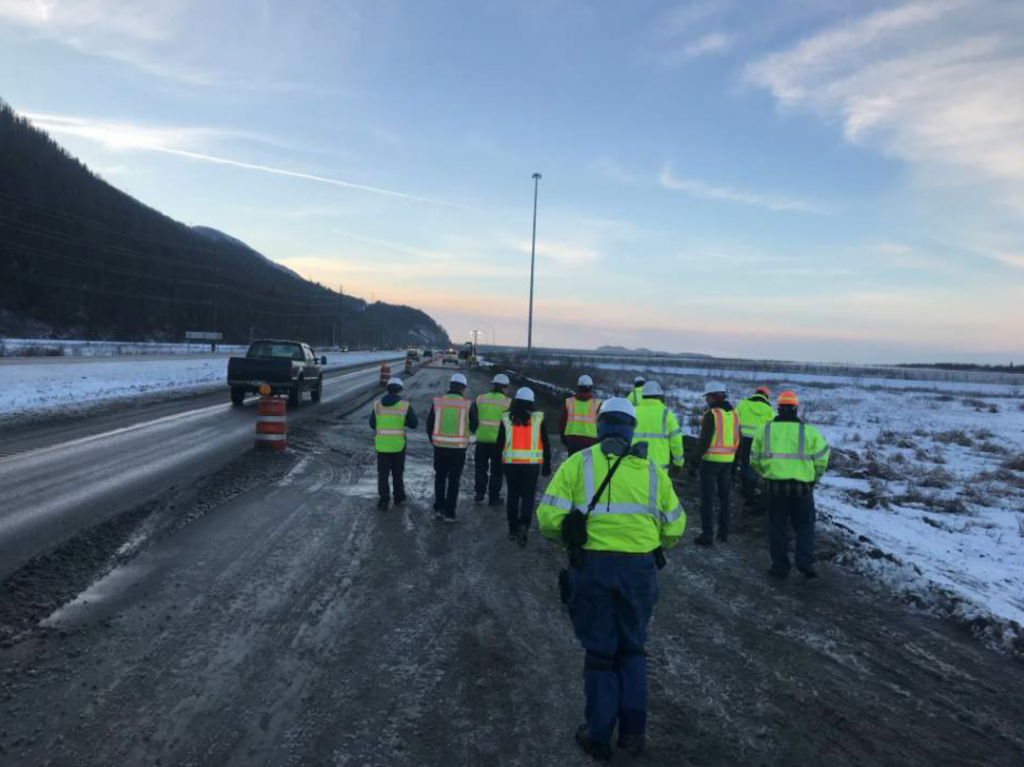
McCarthy said the contracting community began calling to ask how they could help within minutes of the earthquake.
“With this being an emergency situation, there wasn’t as much inspection or surveying as there would be on a typical job,” Hall said. “These were not ideal paving conditions, but the product turned out really well.”
Knik worked alongside sub-contractor McKenna Brothers Paving, Anchorage, who helped truck in asphalt and pave. “It wasn’t a typical subcontractor/primary contractor relationship,” Hall said. “It really was a team approach.”
Planning for Permanent Repairs
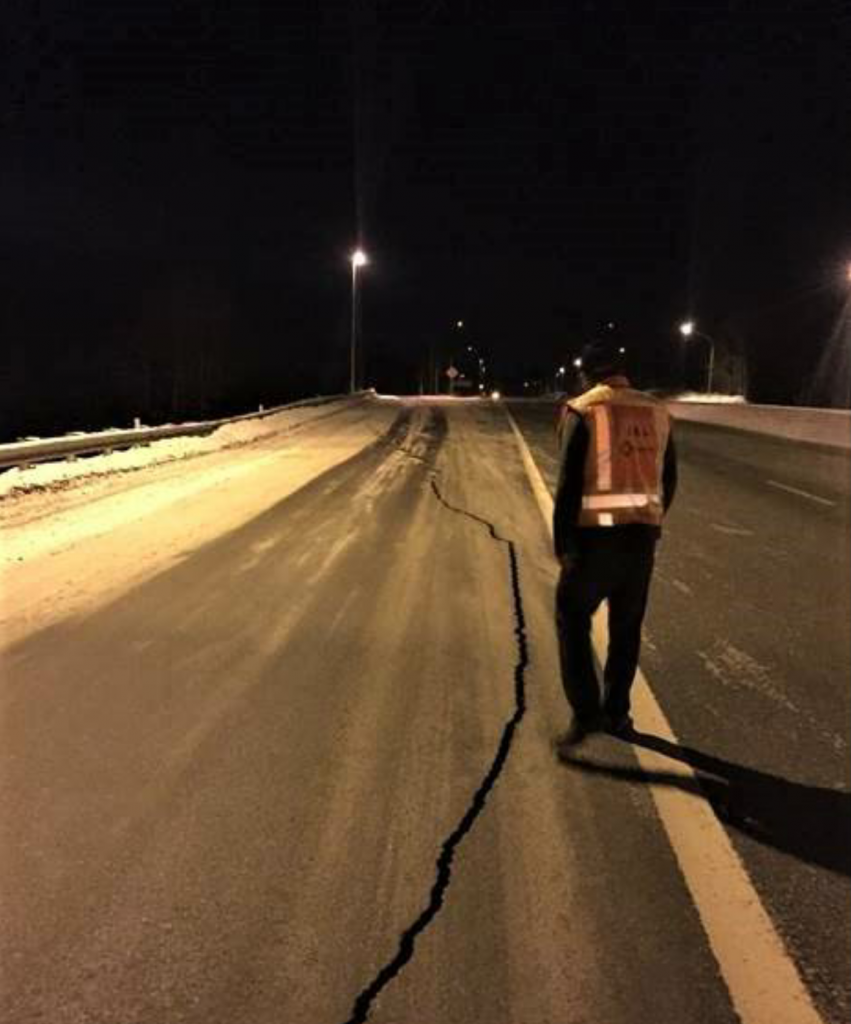
With the emergency declaration approved, the DOT was able to tell crews immediately where to go and the DOT staff would meet them there to establish a plan.
Under emergency circumstances such as these, the FHWA gives agencies 180 days to perform temporary repairs. The Alaska DOT received a 60-day extension. However, there are some repairs that cannot be made until spring thaw, after the 180-day period and 60-day extension. Those projects will be approximately 90 percent federally funded and 10 percent state funded. For example, the crack sealing will all be done this spring and summer.
“It’s very difficult to do winter construction, so we concentrated on all the major fixes first,” McCarthy said. “So much of what we did just aimed to get the road back in shape and make sure water isn’t going to get into the asphalt.”
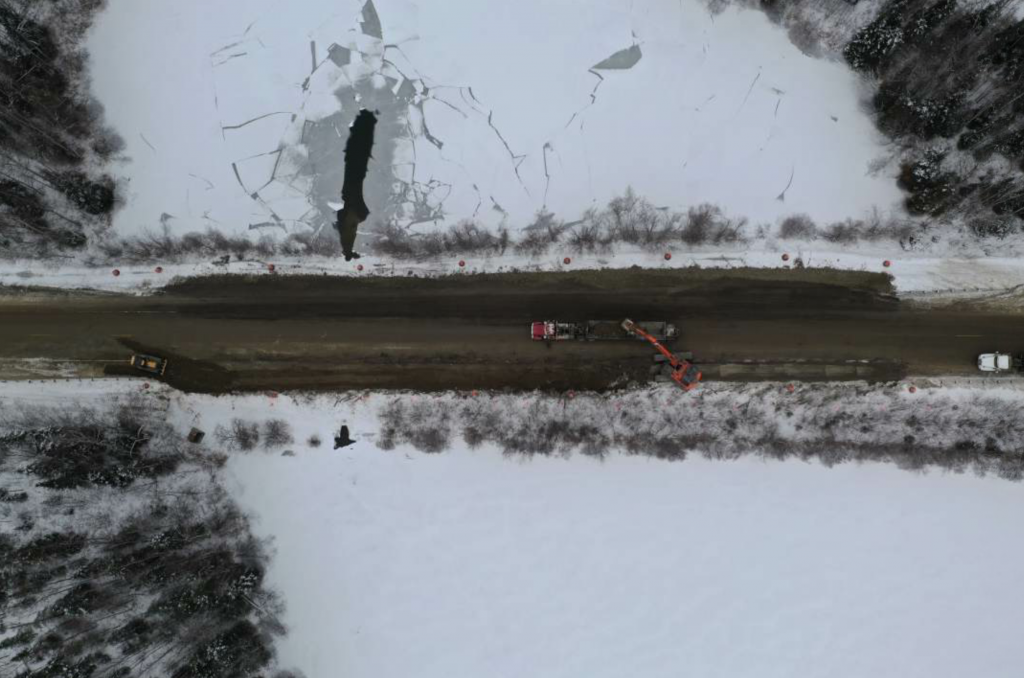
Of the more than 170 sites of damage, traffic completely stopped in eight locations. Three of the sites were major routes that had to be closed down due to the scope of the damage.
Although the Alaska DOT expects the temporary fixes to be fairly durable, they do not anticipate them to last for the 20-year lifecycle they would normally expect.
“Because they had to pave when they normally shouldn’t be paving and compact the asphalt on top of frozen ground, those factors are sure to reduce the quality,” McCarthy said, “but they are still well-built roads.”
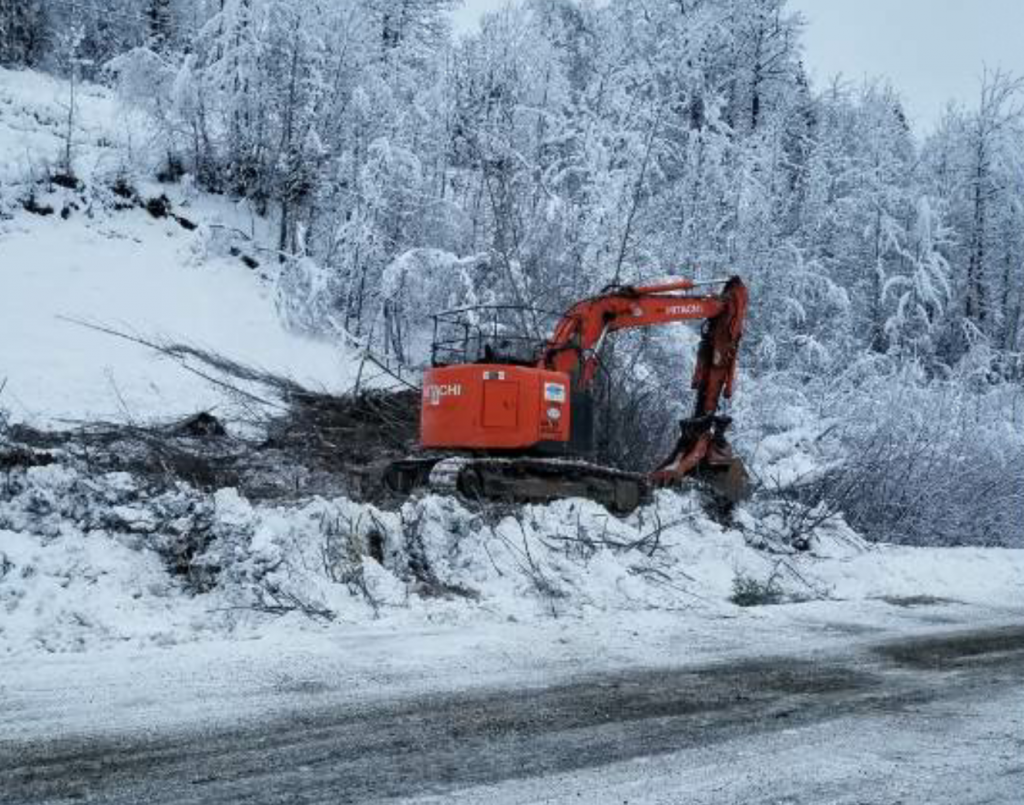
Performing the repairs at temperatures of around 25 degrees Fahrenheit presented some challenges.
As much as it is about the strength of these road repairs–and it is–overcoming the obstacles this emergency presented also showed the strength of DOT/contractor relationships in Alaska and the strength of the Anchorage community.
“The response to the earthquake is the definition of how hardy and caring and driven the people of Alaska are,” Hall said. “People are always ready to jump in and help.”
